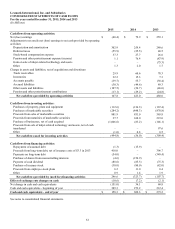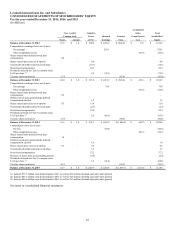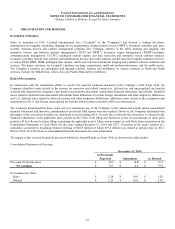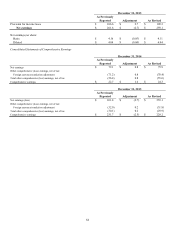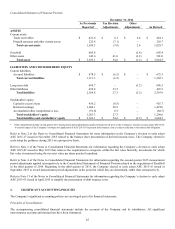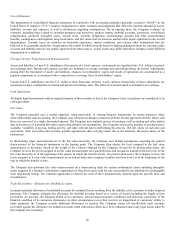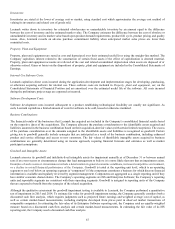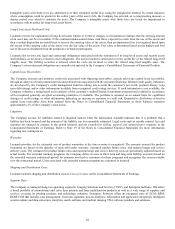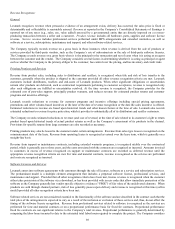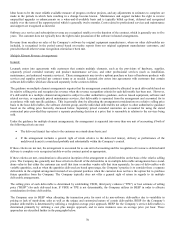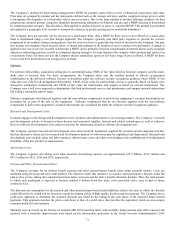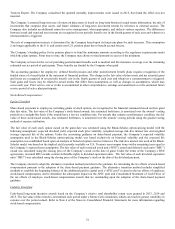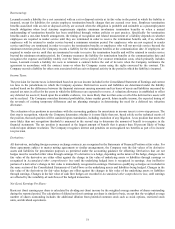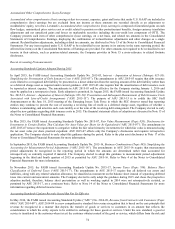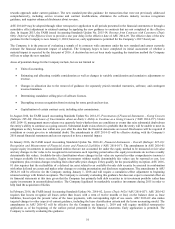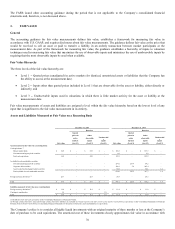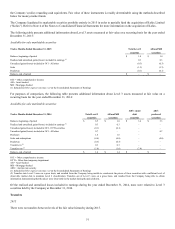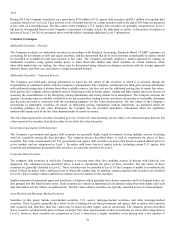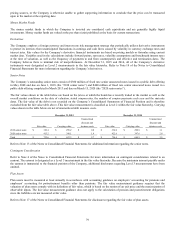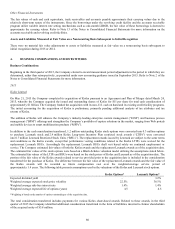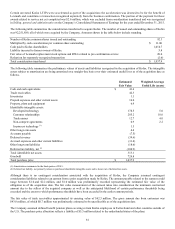Lexmark 2015 Annual Report Download - page 75
Download and view the complete annual report
Please find page 75 of the 2015 Lexmark annual report below. You can navigate through the pages in the report by either clicking on the pages listed below, or by using the keyword search tool below to find specific information within the annual report.
71
The Company’s method for determining management’s BESP for products starts with a review of historical stand-alone sales data.
Prior sales are grouped by product and key data points utilized such as the average unit price and the weighted average price in order
to incorporate the frequency of each product sold at any given price. Due to the large number of product offerings, products are then
grouped into common product categories (families) incorporating similarities in function and use and a BESP discount is determined
by common product category. This discount is then applied to product list price to arrive at a product BESP. This method is performed
and applied at a geography level in order to incorporate variances in product pricing across worldwide boundaries.
The Company does not typically sell its services on a stand-alone basis, thus a BESP for those services not offered on a stand-alone
basis is determined using a cost plus margin approach. The Company typically uses third party suppliers to provide the services
component of its multiple element arrangements, thus the cost of services is generally that which is invoiced to the Company, but may
also include cost estimates based on parts, labor, overhead and estimates of the number of service actions to be performed. A margin is
applied to the cost of services in order to determine a BESP, and is primarily based on consideration of internal factors such as margin
objectives and pricing practices as well as competitor pricing strategies. In some instances the company offers professional services on
a stand-alone basis. For those services the Company utilizes stand-alone quotes to develop a range of prices offered. A BESP for these
services has been determined as an average price per hour.
Software:
For software deliverables, stand-alone selling price is determined using VSOE of fair value which is based on company specific stand-
alone sales or renewal data. For these arrangements, the Company often uses the residual method to allocate arrangement
consideration to the delivered software licenses as permitted under the software revenue recognition guidance when VSOE of fair
value does not exist for all arrangement deliverables. VSOE of fair value for professional services is generally based on hourly rates
charged in stand-alone transactions and VSOE of fair value for maintenance and support is based on renewal transactions. The
Company uses a bell curve approach to demonstrate that both professional services and maintenance and support renewal transactions
fall within a reasonably narrow range.
Software components that function together with the non-software components to provide the equipment’s essential functionality are
accounted for as part of the sale of the equipment. Software components that do not function together with the non-software
components to deliver the equipment’s essential functionality are accounted for under the software revenue recognition guidance.
Research and Development Costs:
Lexmark engages in the design and development of new products and enhancements to its existing products. The Company’s research
and development activity is focused on laser devices and associated supplies, features and related technologies as well as software.
Refer to Software Development Costs earlier in this note for information related to software development costs.
The Company expenses research and development costs when incurred. Equipment acquired for research and development activities
that has alternative future use (in research and development projects or otherwise) may be capitalized and depreciated. Research and
development costs include salary and labor expenses, infrastructure costs, and other costs leading to the establishment of technological
feasibility of the new product or enhancement.
Advertising Costs:
The Company expenses advertising costs when incurred. Advertising expense was approximately $35.3 million, $31.6 million and
$41.7 million in 2015, 2014 and 2013, respectively.
Pension and Other Postretirement Plans:
The Company accounts for its defined benefit pension and other postretirement benefit plans using actuarial models. Costs are
attributed using the projected unit credit method. The objective under this method is to expense each participant’s benefits under the
plan as they accrue, taking into consideration future salary increases and the plan’s benefit allocation formula. Thus, the total pension
to which each participant is expected to become entitled is broken down into units, each associated with a year of past or future
credited service.
The discount rate assumption for the pension and other postretirement benefit plan liabilities reflects the rates at which the benefits
could effectively be settled and are based on current investment yields of high-quality fixed-income investments. The Company uses a
yield-curve approach to determine the assumed discount rate based on the timing of the cash flows of the expected future benefit
payments. This approach matches the plan’s cash flows to that of a yield curve that provides the equivalent yields on zero-coupon
corporate bonds for each maturity.
Mortality rates are based on the Society of Actuaries RP-2014 mortality tables with mortality improvements after 2007 removed and
replaced with a mortality improvement scale based on the intermediate projection in the Social Security Administration’s 2014


